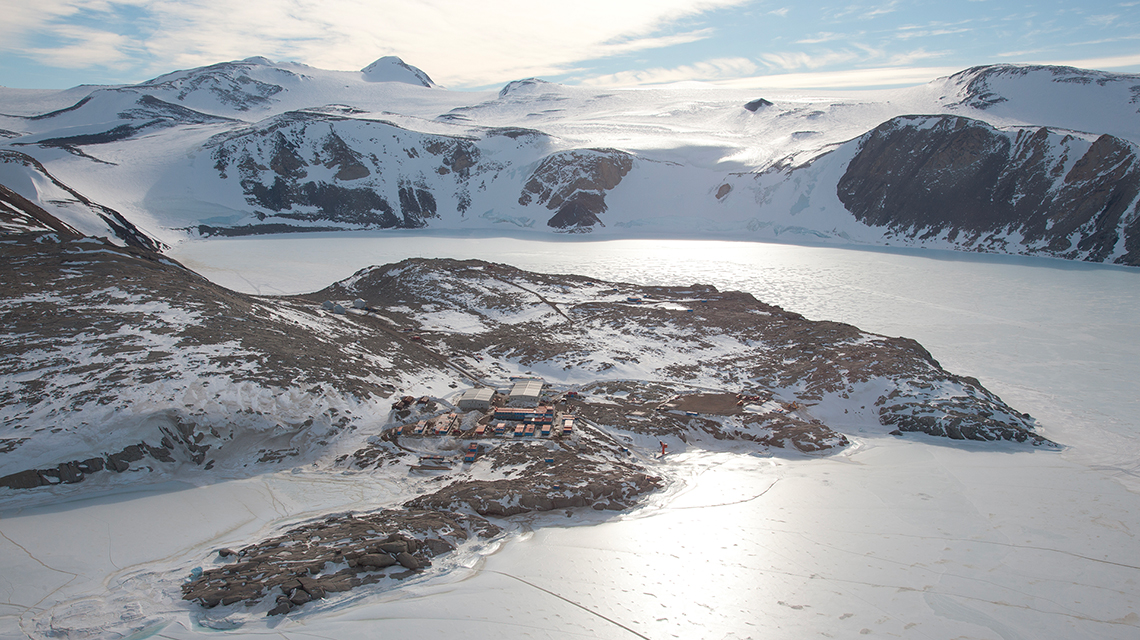Italian National Agency for New Technologies, Energy and Sustainable Economic Development

Antarctica: 41st Italian research season underway
The 41st Italian Antarctic Research Expedition has officially begun, involving around 200 technicians, and scientists working on projects spanning multiple disciplines — including glaciology, geology, climatology, biodiversity, and oceanography. Activities will take place at the two stations Mario Zucchelli and Concordia, and aboard the icebreaker Laura Bassi.
Italian missions in Antarctica are carried out within the framework of the Italian National Antarctic Research Program (PNRA), funded by the Ministry of Universities and Research (MUR) and managed by the National Research Council (CNR) for scientific coordination, ENEA for the logistical planning and organization of activities at Antarctic stations, and the National Institute of Oceanography and Experimental Geophysics (OGS) for the technical and scientific management of the icebreaker Laura Bassi.
The first group of technicians landed in Antarctica to reactivate operations at the coastal Mario Zucchelli Station, which had been closed since February. They are currently assessing the sea ice conditions to prepare the airstrip for upcoming flights operated by the Italian Air Force’s 46th Air Brigade, which will transport materials and personnel for the mission by a a C130J aircraft.
“During this expedition, modernization works will be carried out at the Mario Zucchelli Station, including the redevelopment of internal roadways, maintenance of the pier, and construction of new facilities for technical systems, with the goal of making the base increasingly efficient and functional,” explains Elena Campana, head of ENEA’s Antarctic Technical Unit, which coordinates logistics. “At Concordia, in addition to infrastructure maintenance of the two towers and shelters that make up the station, work will focus on reducing snow accumulation and installing a new water module in the Summer Camp area.”
About 114 researchers and technicians will be based there, working on 14 scientific projects and permanent observatories, including:
- studies of Earth–ice–climate interactions to better understand global environmental dynamics;
- analysis of pollution and human impact on the Antarctic ecosystem;
- research on biodiversity and the adaptations of living organisms to extreme environments;
- geophysical monitoring of crustal movements and ground deformation;
- and investigations in astronomy, astrophysics, and space meteorology.
Several PNRA projects will also be conducted at foreign research bases and aboard international vessels.
In early November, the summer campaign began at the Italian–French Concordia Station, located at over 3,000 meters above sea level, involving about 80 participants across 39 research projects, including the new winter-over crew: 12 members (5 Italians, 6 French, and 1 British). This team will ensure the operation of the station and the continuation of research during the nine months of the polar winter (from early February to early November), when temperatures drop to -80°C and the base remains completely isolated. Research activities will also be carried out for the French Polar Institute Paul-Émile Victor (IPEV) and the European Space Agency (ESA).
By mid-November, the Little Dome C field camp, located 35 kilometers from Concordia, will reopen for the final season of the international project “Beyond EPICA Oldest Ice”, co-funded by the European Commission and coordinated by the CNR Institute of Polar Sciences (CNR-ISP). The field team will carry out bedrock drilling operations beneath the Antarctic ice sheet and extract replica samples of ice cores collected last season, which contain climate data spanning over 1.2 million years.
“This Italian Antarctic expedition once again confirms CNR’s commitment to coordinating cutting-edge scientific research,” says Giuliana Panieri, Director of CNR-ISP.
“Alongside established projects, new high-level international collaborations will be launched. Through these studies, we will deepen our understanding of the Antarctic climate and assess the impact of human activities on this remote and fragile ecosystem, contributing essential data to the study of our planet’s evolution”.
Scientific research activities will also take place aboard the Laura Bassi icebreaker, which departed from Trieste in early October and will arrive in New Zealand in mid-November after a 50-day voyage through the Panama Canal. The ship will begin its journey toward Antarctica on November 25, returning to New Zealand on December 18. At the end of December, it will depart again for the second phase of the Antarctic mission, which will continue until early March 2026, supporting five scientific projects. Onboard will be 28 researchers and technicians, along with a 23-member crew.
“The ship will be engaged for more than 190 days,” explains Franco Coren, Director of the Naval Infrastructure Management Center at OGS.
“Thanks to an extraordinary modernization and maintenance program supported by the Ministry of Universities and Research, the vessel embarks on its sixth Antarctic mission with new technical configurations that will enhance onboard living conditions and improve the efficiency of scientific operations”.
The Italian Armed Forces are participating with 20 specialists from the Army, Navy, Air Force, and Carabinieri, who will assist researchers throughout the expedition — ensuring the safety of field and underwater operations as well as aerial missions, thanks to their meteorological and air traffic control expertise. The mission will also involve three members of the Italian National Fire and Rescue Service (Vigili del Fuoco).
